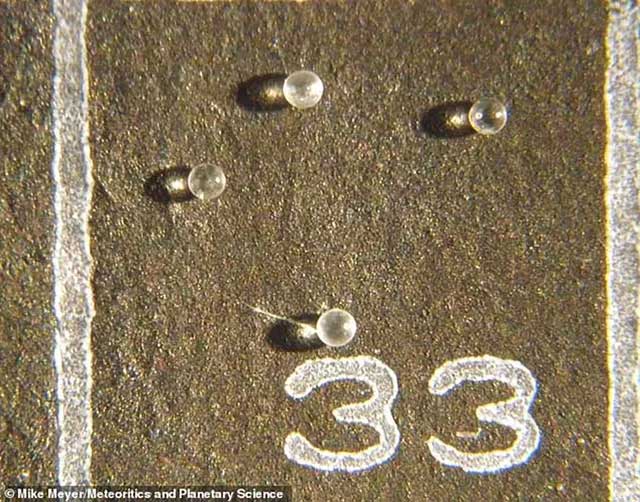Discovering 3 million years old 'cosmic jade' in America
The material of 'cosmic jade' was derived from meteorite collisions and then fossilized by fossilized ancient boys in Florida.
Fossils dredged from a quarry in Sarasota County, Florida may contain 3 million-year-old remnant products of previously unknown meteorite collisions.

The mysterious jewels dating back to 3 million years make scientists call the "cosmic jewel" because it is so perfect that thanks to the ancient part boys.
Researchers have found dozens of other seeds often scattered around ancient shells and shells, each of which is a small, perfect sphere.
These particles are called microtektites , often formed by molten debris from cold meteorites and recrystallize after passing through the Earth's atmosphere. A special feature is that it also appears the ancient shells and oysters.
"It's really outstanding ," said Mike Meyer, who discovered microtektites in 2006 while attending college at the University of Southern Florida.
The 83 particles called ' cosmic jewels' are normally stored in a box for more than a decade before Meyer announced them.
According to the analysis, it could be the remnant of one or more meteor effects that occurred millions of years ago near Florida. Researchers say they are found in four different layers of quarries, each connected to a different time period.
The team suspects these objects are about 2 to 3 million years old. And unlike other effects, they contain large amounts of sodium - a material often lost when burned in the atmosphere.
- Farming people use tens of billion jade to ... pickle salt
- Brazilian miners discovered precious precious jade weighing 3.6 quintals
- The new discovery shocked the star's appearance
- The mystery of ancient jewels in China
- Found the most expensive giant jade of 175 tons in the world
- Discovered a 4,300-year-old jade disc in China
- The 3D universe map contains 1.2 million galaxies that prove the universe expanded rapidly
- Ruby and jade illuminate the history of the Earth
- Stunned to find a source of cosmic rays from the star system Eta Carinae
- The discovery of monkey fossils in North America 21 million years ago
- America spent 100 million USD to discover the secret of human brain
- Detecting fossil crocodile bones dating back 140 million years
 Van Allen's belt and evidence that the Apollo 11 mission to the Moon was myth
Van Allen's belt and evidence that the Apollo 11 mission to the Moon was myth The levels of civilization in the universe (Kardashev scale)
The levels of civilization in the universe (Kardashev scale) Today Mars, the sun and the Earth are aligned
Today Mars, the sun and the Earth are aligned The Amazon owner announced a secret plan to build a space base for thousands of people
The Amazon owner announced a secret plan to build a space base for thousands of people After 1,800 years, ghosts from ancient Mayan cities are still enough to harm people
After 1,800 years, ghosts from ancient Mayan cities are still enough to harm people  How advanced were prehistoric civilizations?
How advanced were prehistoric civilizations?  The mystery of the 4,000-year-old nuclear explosion at India's 'hill of death'!
The mystery of the 4,000-year-old nuclear explosion at India's 'hill of death'!  Why do archaeologists absolutely not touch two 'colorful' things in ancient tombs?
Why do archaeologists absolutely not touch two 'colorful' things in ancient tombs?  What is the difference between Western eunuchs and Chinese eunuchs?
What is the difference between Western eunuchs and Chinese eunuchs?  Scientists use scanners to study Egyptian mummies and solve 3,000-year-old mystery!
Scientists use scanners to study Egyptian mummies and solve 3,000-year-old mystery! 